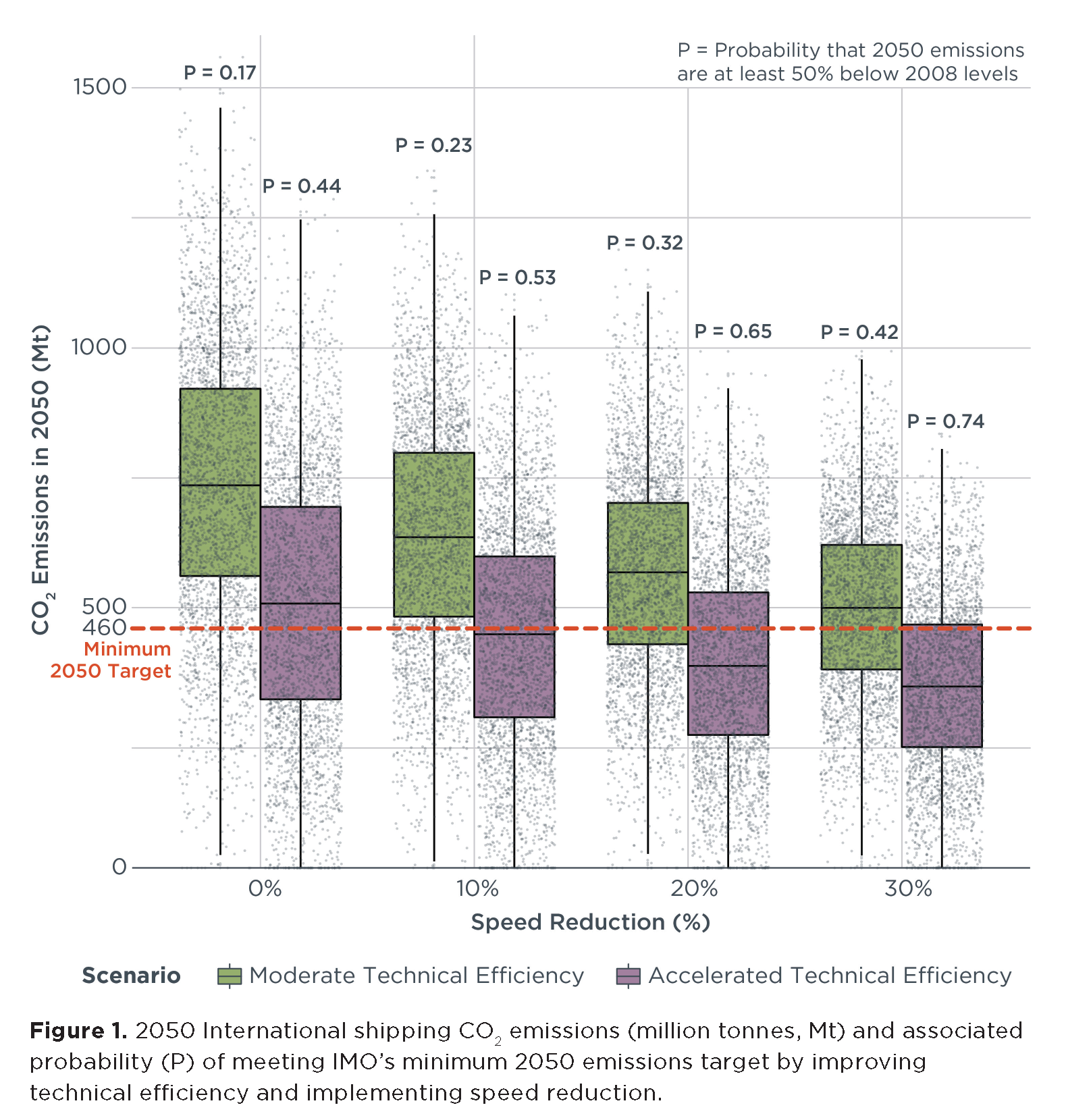The International Maritime Organization’s initial greenhouse gas strategy
Working Paper
Relating short-term measures to IMO’s minimum 2050 emissions reduction target
In April 2018, the International Maritime Organization (IMO) agreed to its initial greenhouse gas (GHG) strategy, which aims to reduce the international shipping sector’s GHG emissions at least 50% below 2008 levels by 2050. We analyzed how short-term actions, including improving energy efficiency for new ships and existing ships, along with introducing low-carbon fuels, can help improve the chances of achieving this target.
There is a greater than 50% chance of achieving IMO’s minimum 2050 emissions target if the 2025 Energy Efficiency Design Index standards are implemented in 2022, new and increasingly stringent technical efficiency standards are implemented in 2025, and ships slow down at least 10%. Accelerating technical efficiency standards without reducing speeds results in a less than 50% chance of achieving the minimum 2050 emissions target, as does slowing ships down without accelerating technical efficiency standards. Therefore, there is a clear benefit to implementing both measures together. Indeed, under each speed reduction scenario, accelerating technical efficiency standards approximately doubles the probability of achieving the minimum 2050 emissions target. The highest probability of success (74%) occurs when both the implementation schedule for newbuild technical efficiency standards is accelerated by five years and ship speeds are reduced by 30%.
Careful consideration must be given to the design of efficiency measures to protect against undue market distortions, perverse incentives, rebound effects, and other unintended consequences. Stakeholder engagement and conscientious policy design can help alleviate some of these concerns while helping to achieve the initial strategy’s emissions reduction goals, including phasing out GHG emissions from the sector a soon as possible this century.

